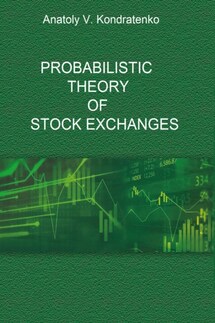Probabilistic Economic Theory - страница 9
3. The Axioms and Principles of Physical Economics
Generally speaking, our attitude towards the problem of adequate quantitative description of the agent behavior in the market as well as market S&D and price formation is based on the two rather simple axioms of a very general character.
1. The Agent Identity Axiom.
All market agents are the same, only the supplies and demands they have different. The axiom says that all market agents share common properties, depending primarily on agent revenues and expenses, or more strictly, on supply and demand (S&D below) for traded goods and services. It is these agents’ S&D that mainly determine the rational economic behavior of agents on the markets, and eventually the behavior of the whole markets. It shows a possibility of building rather common and accurate models of behavior of agents in the market, and hence the total market as a whole. It sets us on the right track for the identification and examination of the common properties in the behavior of market agents that ensure appearance of the common patterns and regularities in the course of market processes. It gives us the ability to build theoretical economic models on a fairly high scientific level by using physical and mathematical methods, which is the primary goal of physical economics and economic theory in general. We are certain that only these types of common market phenomena and processes are rightly a matter for exact scientific economic enquiry. In other words, it focuses us on building economics as an exact science in the image and after the likeness of the natural sciences.
2. The Agent Distinction Axiom.
All market agents are distinguished. The second axiom works when the first axiom fails. Thus, it defines those areas and aspects of the agents’ behavior on the markets that are the subject of the studies of other sciences of more applied nature, such as marketing, behavioral science, managerial economics, psychology, policy, etc. In other words, these social sciences are concerned with the specific nuances and peculiarities in the behavior of concrete people, agents and communities in different markets and situations, etc.
Let us stress that in economics we do not study real people, but rather the real actions of these people on markets. The people can be different but market decisions and actions of these people can be the same, depending primarily on their supplies and demands on markets. It is this fact that lies in the background of the agent identity axiom.
Hence, we will sum up everything we have stated above in the form of the five general principles of physical economics and probabilistic economic theory as follows:
1. The Cooperation-Oriented Agent Principle.
The most important concept concerning markets is as follows: every market consists of market agents, buyers and sellers, all strongly interacting with each other. There are never any mysterious forces in markets. Everything that markets do, the cooperation-oriented market agents do, and therefore only the cooperation-oriented, agent-based models can provide the reasonable and justified foundation for any modern economic theory.
2. The Institutional and Environmental Principle.
Markets are never completely closed and free; all the market agents are under continuous influences and under such external institutional and environmental forces and factors as states, institutions, other markets and economies, natural and technogenic phenomena, etc. The influences, exerted by each of these forces and factors on the structure of market prices and on the market behavior, can be completely compared with the effect from inter-agent interactions. Moreover, the action of strong external institutional and environmental factors can significantly hamper the effective work of market mechanisms and even practically suppress it in a way that results in the breakdown of the market’s invisible hand concept, well-known in classical economics. Therefore, the influence of institutional, environmental and other external factors must be adequately taken into account in the models, as well as simultaneously with the inter-agent interactions.







